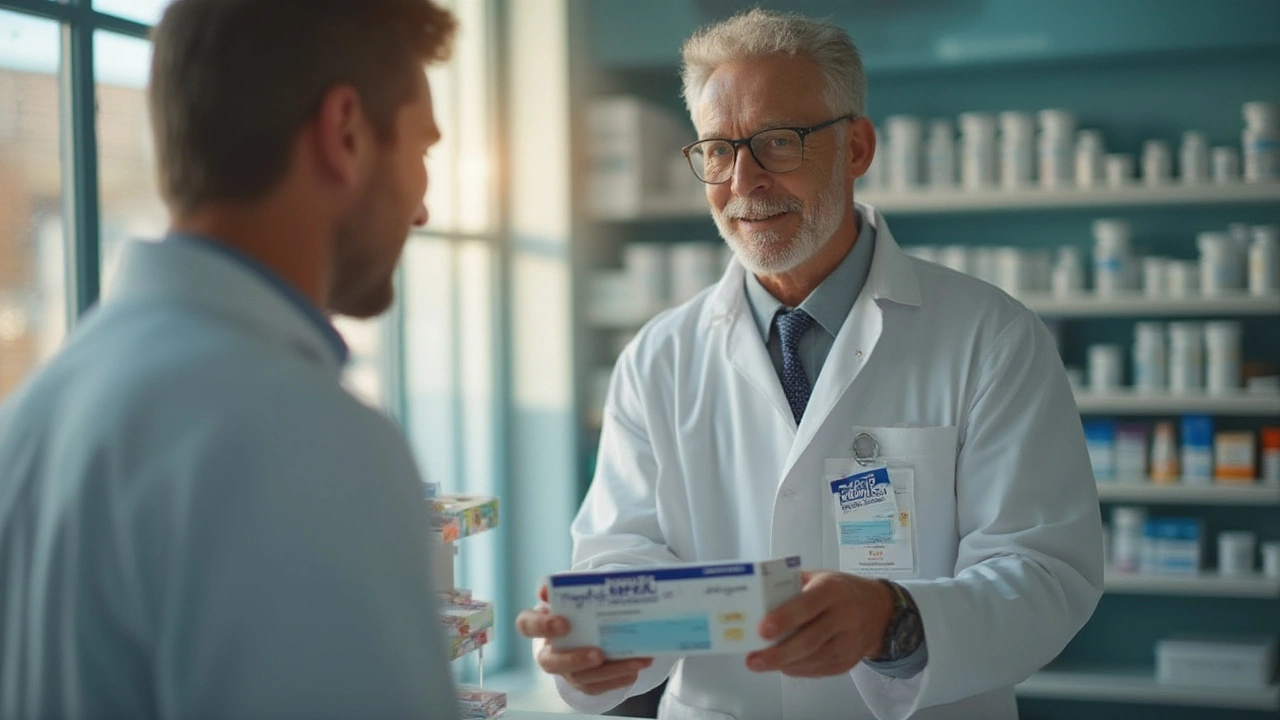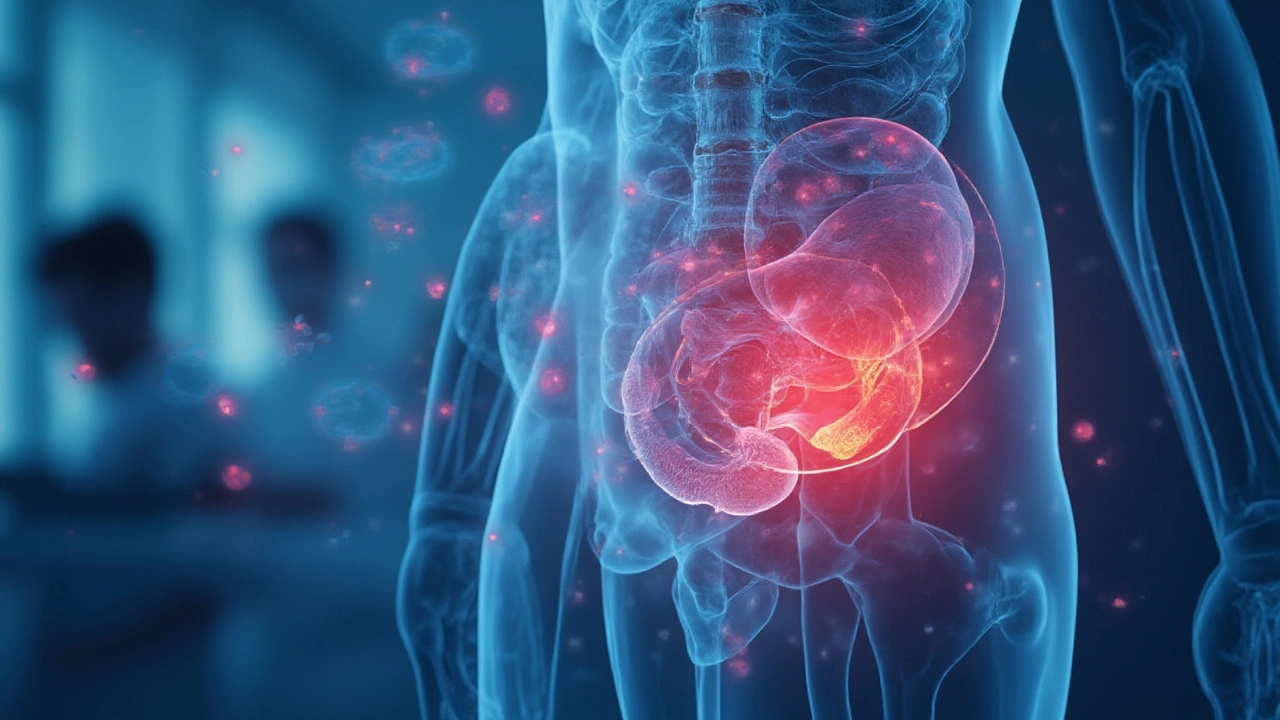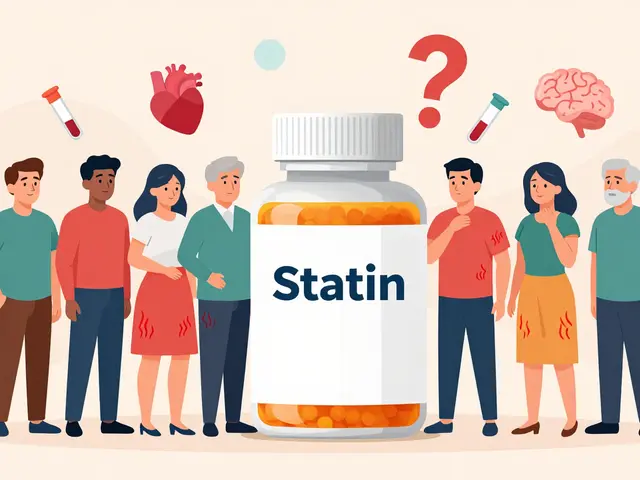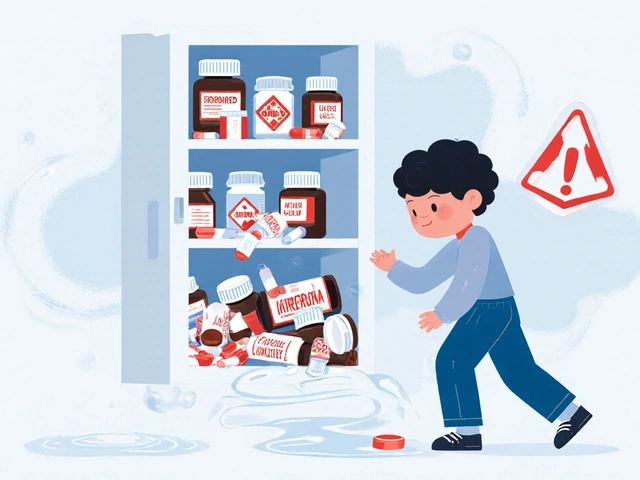
Few words make people as cautious as “antibiotic.” Yet, when a urologist leans back in their chair and says, “You’ll be taking Noroxin,” you want to know what’s going on inside that pill bottle. You might even ask yourself, “What’s Noroxin going to do for me—besides keep me tied to my water bottle and maybe a bathroom or two?” The truth is, this medication isn’t just fighting a minor scratch or sniffle; it plays with the big bugs that knock out your bladder, kidneys, and even your prostate. But Noroxin’s story is more complicated than it looks on the pharmacy slip you get at checkout.
What is Noroxin and How Does It Work?
Noroxin is the brand name for norfloxacin. It was introduced in the 1980s and quickly became a go-to option for certain urinary tract infections (UTIs) and prostate infections. Its main weapon: disrupting the DNA of bacteria so they fall apart and die. Noroxin belongs to a class of drugs called fluoroquinolones—the same family as ciprofloxacin, levofloxacin, and a few others you’ve maybe heard thrown around the emergency room.
What makes Noroxin different from your grandma’s penicillin? First, its DNA-busting action works on a wide variety of bacteria. It’s especially good against some of the classic UTI troublemakers—think E. coli, the bacteria responsible for most bladder infections. Doctors often pick Noroxin because it doesn’t just go after surface-level bugs; it can hit bacterial invaders tucked away deep in the urinary tract or prostate where other antibiotics have trouble reaching. That’s a big deal if you’re dealing with a stubborn, recurring infection.
Not all bacteria shudder at the sight of Noroxin, though. You’ll notice in some countries, doctors are a lot more conservative with it because resistance is growing. That basically means some bacteria have learned to ignore norfloxacin and its cousins. The upshot? You might get prescribed a different antibiotic if your local lab results show resistance is high where you live. There’s also a reason why it isn’t used for simple, run-of-the-mill infections these days—regulators have pushed for more specific, targeted use to keep resistance in check and because of a few gnarly side effects that can pop up (more on that in a bit).
Noroxin mostly works for infections in the urinary tract—covering both the lower part (like bladder infections, called cystitis) and the upper tract (such as pyelonephritis, which is a kidney infection). For men, it’s also used for chronic prostate infections, which can be tough to get rid of since not many antibiotics reach high levels in prostate tissue. Norfloxacin, though, does a pretty decent job in that department.
Another thing you should know: Noroxin isn’t a cure-all for every UTI or infection out there. For example, it’s not the best choice if you’re dealing with a severe case of pyelonephritis or if you’re a kid, pregnant, or dealing with certain heart issues. It doesn’t touch most types of pneumonia, staph infections in the blood, or viral problems at all. It’s specific—the kind of antibiotic that works in particular places against particular bacteria—but when it’s the right fit, it can make all the difference.
One of the most interesting facts? Noroxin got pulled off the market in several countries (including the United States and much of Europe) as of 2019 due to safety and resistance concerns. Yet, some doctors in other parts of the world still turn to it because it can be effective where other medicines fall short. As of mid-2025, there isn’t much brand name Noroxin floating around, but its generic—norfloxacin—remains available in some countries, especially for select urology uses.
So, what does this mean for you if you’re clutching a norfloxacin prescription right now? Check where you are, ask about local resistance rates, and keep in mind that if your doctor picked this drug, they probably have a good reason based on your infection’s location and history.
Noroxin Dosage, Administration, and Patient Tips
If you’re prescribed Noroxin—or norfloxacin—the dosing is pretty cut and dry for most adults: typically 400 mg taken twice daily. You'll often find that the course lasts anywhere from three days for an easy UTI, up to 28 days if you’re the unlucky guy watching an episode of chronic prostatitis drag on obnoxiously. The important thing is to take it exactly as directed—skipping doses or stopping early is pretty much throwing up a white flag for bacteria, giving them a chance to regroup and fight back later.
Here’s a tip the pharmacists don’t always shout loudly enough: Noroxin’s absorption is quirky. Swallow your pills with a glass of water at least one hour before or two hours after a meal. Foods, especially dairy like milk or yogurt, can mess around with how your body absorbs the drug. Even certain multivitamins or antacids—especially those with magnesium, calcium, or aluminum—will tie up Noroxin and basically keep it from working. If you can’t avoid those meds altogether, space them at least two hours apart from your antibiotic.
Staying hydrated while on Noroxin can help reduce some of the risk of side effects. You don’t need to drown yourself, but keeping a steady intake of clear fluids does support your kidneys—remember, this antibiotic is processed by your kidneys and the urinary tract is usually the main battleground. If you have kidney problems, make sure your dose is adjusted, as norfloxacin can build up in the body and push side effects into overdrive if your renal function is impaired.
A strange, but true, fact: Norfloxacin can make you super sensitive to sunlight. Las Vegas weekend? Think again. Load up on sunscreen or slap on a hat and long sleeves if you’re spending time outside. Some people burn faster than they do in the Greek isles on July 5, and it’s no fun explaining a sunburn–rash combo to your already grumpy doctor. If you notice any kind of rash or hives (especially with swelling or trouble breathing), stop taking the medication and call your provider immediately.
Feeling lightheaded? Noroxin can cause a drop in blood pressure or dizzy spells for some. Move slow when getting up from sitting or lying down. If you’re driving or operating machinery, take it easy until you know how you react. The last thing you want is to end up explaining a fender bender with “my antibiotics made me woozy.”
Noroxin isn’t meant for viral infections like the flu or common cold. Trying to “just in case” yourself with leftover norfloxacin is a fast way to build resistance and risk dangerous side effects for no benefit. Only take it if a doctor prescribed it specifically for what you’ve got. Sharing antibiotics—no matter how well-meaning your neighbor or uncle might be—is honestly a terrible idea.
Missing a dose? Take it as soon as you remember—unless it’s almost time for your next one, then skip the missed one. Doubling up doses “to catch up” isn’t helpful and can increase your risk of side effects. Finish the whole course even if you feel better halfway through, so you actually clear the infection instead of tamping it down just enough for it to come roaring back.
For people who use hormonal birth control, Noroxin doesn’t usually interfere with contraception, but illness and antibiotics in general can upset your system. Always check with your doctor about backup birth control if you’re worried.
Here’s a quick checklist to get the most out of your antibiotic course with the fewest problems:
- Take each dose with water, away from meals, milk, and antacids.
- Avoid sunbathing or tanning beds; use sun protection daily.
- Finish the full course even if symptoms disappear early.
- Don’t double doses if you miss one—just continue as scheduled.
- Stay hydrated, and let your doctor know if you have kidney issues.
- Report any side effects, especially rash, swelling, or tendon pain, right away.

Side Effects, Risks, and Warnings for Noroxin
This is where things can get a little dicey. Noroxin isn’t notorious for causing endless problems, but under the wrong conditions, it can be a magnet for issues that’ll make you reconsider casually swallowing it with your morning coffee.
Let’s talk side effects—the usual suspects are nausea, diarrhea, headaches, dizziness, and sometimes trouble sleeping. There’s a reason why patients often say, “This pill messes with my stomach.” Taking it with a bit of food can help relieve nausea, but beware—food cuts down how much norfloxacin your body actually absorbs, so it’s a tradeoff.
The bigger headlines, though, come from the rare but serious risks. Fluoroquinolones like Noroxin have been tied to tendon issues, including tendonitis and even tendon rupture. Think about that: your Achilles tendon giving out while you’re out for a walk or stepping off a curb is no joke. Folks over 60, those on steroids (like prednisone), and people with kidney, heart, or lung transplants are most at risk. Tendon pain, swelling, or bruising—especially in the back of your ankle—deserves a call to your doc ASAP. Don’t try to “walk it off.”
You might have heard some headlines linking Noroxin to nerve problems, too. In extremely rare cases, it can cause nerve pain, numbness, tingling, or burning sensations—sometimes these issues can stick around even after you stop the drug. That’s enough to make anyone nervous. And there’s more: mood changes, hallucinations, confusion, and even seizures have shown up in isolated reports. The FDA, when Noroxin was available in the States, issued warnings specifically highlighting the need to stop the medicine and call for help if you notice anything odd with your nerves or mental state.
Then there’s heart health. Norfloxacin may affect your heart rhythm, especially if you’re already on other medications that mess with electrical conduction or if you have a long QT interval on an EKG. Let your doctor know if you’re on drugs for rhythm issues, certain antibiotics, antidepressants, or antipsychotics—mixing these can set your ticker fluttering in weird ways.
One more note for anyone with a history of myasthenia gravis (a rare muscle disease): Noroxin can make muscle weakness much worse and has sent some people to the hospital with breathing trouble. If you’ve got muscle issues, your doctor should be picking something else.
The risk of Clostridium difficile-associated diarrhea (C. diff) is another thing to watch out for. That’s the kind of infection that can rear up after antibiotics wipe out your “good” gut bacteria and allow bad bugs to take over. Anyone with persistent diarrhea after their norfloxacin course needs to check in with their healthcare provider.
Here’s a quote straight from the European Medicines Agency summarizing the shift in guidelines after years of use:
“Fluoroquinolone and quinolone antibiotics should be restricted due to disabling and potentially long-lasting side effects involving muscles, joints, and the nervous system.”
It’s no surprise that regulators have dialed back Noroxin’s use to only situations where nothing else works, or the infection is particularly resistant. The numbers aren’t huge—most people will take their course and feel a lot better—but the risks are serious enough that doctors now reserve it for tricky cases and keep a close eye on anyone taking it.
If you’re prescribed Noroxin, ask about risks specific to your medical history. Don’t be shy— list your other medications, any long-term conditions, and don’t swallow your first dose until your pharmacist has checked those boxes too. The medicine is only as safe as it is well-monitored.
Special Considerations, Alternatives, and the Future of Noroxin Therapy
Since Noroxin is in the spotlight for both its powerful uses and possible downsides, doctors are more careful than ever when reaching for it. If you’re pregnant or breastfeeding, Noroxin isn’t recommended at all. There aren’t enough well-controlled studies showing it’s safe for the baby, and animal studies have shown problems with cartilage development. Kids under 18 are also a no-go—again, cartilage worries and a lack of solid evidence for safe use.
People with kidney disease or severe liver disease need close monitoring. If you have seizure disorders or take meds that lower your seizure threshold, be upfront with your doctor—the risk, while rare, isn’t zero. Also, if your job requires you to focus, operate heavy machinery, or make quick decisions, you’ll need to see how you react before returning to work. That lightheadedness and occasional brain fog can sneak up on you.
Are there alternatives if Noroxin isn’t in your corner? Luckily, yes—these days, most uncomplicated UTIs are easily managed with nitrofurantoin, trimethoprim-sulfamethoxazole (aka Bactrim), or even a short course of fosfomycin. For complicated infections or chronic prostate trouble, your doctor may suggest ciprofloxacin, levofloxacin, or a totally different class of antibiotic—based, of course, on what your bacteria are susceptible to locally. Labs can run a sensitivity report, basically telling your doctor which antibiotics will finish the fight most effectively and safely.
The future of antibiotics like Noroxin isn’t set in stone. While you’ll find experts cautioning about resistance and side effects, new research is always under way to find safer, more targeted treatments. Right now, a laser focus on using antibiotics only when necessary is the best way to keep them working for everyone (and to keep side effects at bay).
Ever since the late 2010s, prescribers have taken antibiotic stewardship seriously—using the right drug, at the lowest effective dose, for the shortest necessary time. This shift is backed by research showing that overuse of fluoroquinolones led to major resistance problems, turning once-mighty drugs into near-placebos in some communities. As one researcher pointed out in a 2023 editorial in “Clinical Infectious Diseases”:
“Prudent use of each antibiotic preserves our ability to treat even the nastiest infections in the future.”
If you’re prescribed Noroxin, it’s not because your doctor’s on autopilot. It means you have a specific infection, probably backed up by a lab report, and they think this med gives you the best chance at a fast recovery. Ask questions—about your risks, about your dose, about alternatives. When it comes to Noroxin, knowledge is just as important as the prescription in your hand. And if you ever feel weird or off while taking it, don’t try to tough it out—your doctor will want to know. There’s always Plan B.




Cinder Rothschild
July 10, 2025 AT 00:32This post is pretty informative! I wasn’t really aware that Noroxin was quite versatile when it came to urinary and prostate infections. Makes me think how essential it is to understand the full range of uses for any med we get prescribed since it’s not just about popping pills but really about knowing what each does, right? Also, the piece on safe use tips reminds me how often people just overlook those, rushing through their dosage without care, which can lead to some issues.
Side effects are always a tricky topic because sometimes they’re mild and manageable, but other times they can be quite severe. So, the emphasis on patient info here definitely adds value. It’s like, if we could all do a better job at self-education before and even after consultations, it would reduce a lot of trouble down the line.
Oscar Brown
July 11, 2025 AT 04:13While the initial overview of Noroxin’s utility is commendable, I find the lack of depth concerning its pharmacodynamics somewhat disappointing. When discussing any antibiotic, especially those with widespread use in urinary and prostate infections, it is paramount to delineate the mechanisms that underpin its efficacy as well as resistance patterns emerging globally.
Moreover, an essential aspect overlooked is the absolute contraindications in patients with predispositions, such as those suffering from tendon disorders or with a history of hypersensitivity reactions. Without such detailed information, the lay reader might still walk away insufficiently informed.
In short, the post serves as a helpful primer, but it requires robust expansion to meet the standards of comprehensive patient education.
Sarah Pearce
July 12, 2025 AT 08:00Ok so i tried Noroxin a while back coz my doc said it fits for my uti but omg the side effects thing wasnt all that clear to me here. Like, they mention risks but dont really get into how bad it could get, ya know?? I ended up feeling super dizzy and my stomach was a mess. Anyone else had that??
Also lol @ me i didnt realize you gotta be careful with sun exposure after taking it. I got sunburned bad as hell. So yeah, some heads up about that in this post would be pretty clutch.
Ajay Kumar
July 13, 2025 AT 11:46Hey everyone, great discussion going on here. Just to add from my experience, Noroxin has been something that a close family member used for a prostate infection, and the doctor was very specific about the duration and making sure to complete the course even if symptoms improved earlier. That’s so crucial because stopping antibiotics prematurely can lead to resistance and recurrence.
Also, it's important to keep hydrated to ease the body's process of flushing out the infection. As for side effects, yeah, dizziness and stomach upset are common but often transient. If someone faces severe symptoms, they should definitely talk to their doctor immediately.
Would love to hear if anyone else has tips on managing side effects while on Noroxin!
Richa Ajrekar
July 14, 2025 AT 15:33Honestly, I feel like sometimes too much focus is put on these side effects and it scares people unnecessarily. If used correctly, according to guidelines relevant to our country, Noroxin is quite effective and safe, unlike some imported meds people blindly trust without considering local bacterial resistance trends.
Yes, antibiotic stewardship is crucial but it has to be done with proper national data, and not just any western notions applied everywhere. We need more tailored healthcare policies here with clear patient education that reflects local realities.
Pramod Hingmang
July 15, 2025 AT 19:20Building on the insightful points mentioned earlier, I'd like to emphasize the role of patient compliance and the psychological comfort that information provides. When patients understand not just what to take but why, and how their bodies might react, it transforms the treatment experience into a partnership rather than a blind prescription.
Noroxin, as a potent fluoroquinolone, commands respect but also understanding. Perhaps, infusion of accessible educational aids — like clear infographics or patient testimonials — could be a creative way to enhance adherence and reduce anxiety around treatment.
Benjamin Hamel
July 16, 2025 AT 23:06I'm skeptical about celebrating Noroxin as much as some seem to here. There's a reason why many practitioners now hesitate to prescribe fluoroquinolones unless absolutely necessary — the risks sometimes outweigh the benefits, especially when milder antibiotics can suffice.
Have any of you looked into alternative treatments or natural remedies for urinary infections? I’m not saying skip Noroxin if you really need it, but maybe let's also consider minimizing our reliance on strong antibiotics when possible.
That said, I appreciate the detailed talk about its uses and side effects in the post. Just remains cautious with such drugs.
Christian James Wood
July 18, 2025 AT 02:53Honestly, I find too many posts on antibiotics like Noroxin to be sugarcoated. The reality is, you take these drugs and your body might pay the price later, and not just mildly. Tendon rupture, neuropathy, and other serious side effects aren't just urban legends but real warnings ignored by patients until they suffer.
People need a wake-up call that these meds aren't candy. The post is a good start but stop acting like it’s totally safe just because it’s prescribed. Responsibility on both ends here!
Rebecca Ebstein
July 19, 2025 AT 06:40Hey all! I totally get the concerns raised about side effects and risks, but I wanna toss in a bit of optimism here 🙂. Used Noroxin once for a UTI and yeah, had some minor nausea but finished the course and felt great afterward. I think it’s about being vigilant and listening to your body more than outright fearing the drug.
Plus, having a supportive doc who actually explains what to expect really helps mitigate anxiety, which is half the battle sometimes.
Anyone else had a pretty smooth run with it?
Artie Alex
July 20, 2025 AT 10:26Very interesting to see the varying perspectives here. However, I must assert that minimizing the risks or downplaying the guidance around Noroxin’s safe use borders on negligence. The drug’s pharmacokinetic profile is complex, and interactions can lead to severe outcomes.
Doctors and patients must maintain a rigorous protocol, documenting all potential interactions, contraindications, and patient histories. This is not about fearmongering but about strict clinical prudence.
Am I too harsh? Perhaps. But medical safety demands that kind of rigor.
Cinder Rothschild
July 21, 2025 AT 14:13@Ajay Kumar, good point about finishing the course! So critical and often missed. And hey @Rebecca Ebstein, glad your experience was positive! Your optimism is refreshing and reminds me that while risks exist, many do navigate these treatments well when informed.
Also, to those worried about side effects like @Christian James Wood, it’s valid to be cautious but balance is key. Maybe we all agree that education and doctor-patient communication are what makes the biggest difference.
Ajay Kumar
July 22, 2025 AT 18:00@Cinder Rothschild, absolutely! Knowledge empowers and reduces anxiety tremendously. Patients who are proactive in understanding their meds often have better outcomes, so articles like this, even if introductory, play a valuable role.
Never underestimate the power of communication between patient and healthcare provider.
Benjamin Hamel
July 23, 2025 AT 21:46@Benjamin Hamel I totally agree that alternative options deserve a spotlight. But in cases where Noroxin is the best fit, the post helps set expectations which is good. Just wish there was more on how to weigh options thoroughly.
Christian James Wood
July 25, 2025 AT 01:33@Christian James Wood, you’re not harsh, you’re realistic. The harsh truths are often what awaken people to real risks rather than sugarcoating and false security.
Patients need to hear the blunt facts sometimes so they truly understand what they’re signing up for.
Rebecca Ebstein
July 26, 2025 AT 05:20@Rebecca Ebstein here, yes to supportive docs! >< Glad to see others who feel a little positivity about their Noroxin journey too. Wishing everyone less anxiety and safer healing from infections.